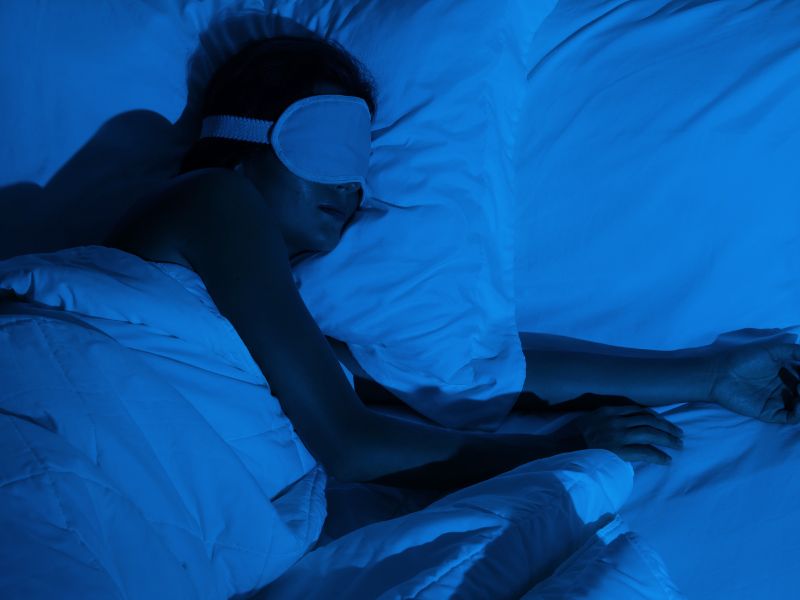Rapid Eye Movement Sleep, commonly known as REM sleep, is a fundamental phase of the sleep cycle that typically occurs multiple times throughout the night.
It’s during this stage that the most vivid dreaming takes place. The defining characteristics of REM sleep include a rapid and random movement of the eyes, an increase in brain wave activity that resembles wakefulness, and temporary paralysis of most voluntary muscles, which prevents the sleeper from acting out dreams.
Dreaming during REM sleep plays a crucial role in emotional processing and memory consolidation. This phase of sleep enables individuals to reorganize and integrate experiences and information from the day. As a result, REM sleep is not only essential for cognitive functions but is also closely examined in sleep medicine due to its complex nature and impact on overall health.
The behavior of brain waves during REM sleep is also noteworthy. Unlike the slower, more synchronized waves observed during the other stages of sleep, REM sleep is marked by irregular, faster patterns often associated with wakefulness.
This paradoxical state, where the brain is active but the body remains mostly immobile, highlights the unique aspects of REM sleep and the part it plays in sleep health and well-being.
Physiology of REM Sleep
REM sleep, also known as paradoxical sleep, is characterized by unique physiological activities such as intense brain activity, vivid dreaming, and loss of muscle control. It's a key sleep stage where different brain areas work together, and it has big impacts on your health.
Brain Activity and Stages
During REM sleep, brain activity intensifies, as observed in patterns on an EEG (electroencephalogram), resembling a wakefulstate.
A part of your brain called the pons makes this stage happen, and it’s is when you have your most active dreams.The amygdala and thalamus are particularly active during this phase, which involves processing emotions and sensory experiences.
REM sleep typically begins after the completion of the three stages of NREM (non-rapid eye movement) sleep, cycling through these stages multiple times throughout the night.
Muscle Atonia and Movement
REM sleep is also defined by muscle atonia, where major muscle groups exhibit a near-total loss of tone and preventing movement. This state is a protective mechanism that keeps individuals from physically acting out their dreams, a function that is disturbed in REM Sleep Behavior Disorder.
However, not all movement is inhibited; rapid movements of the eyes are a hallmark of this stage, hence the term "rapid eye movement" sleep. Breathing and blood pressure become irregular during REM, reflecting the heightened brain activity and variability of this sleep phase.
Functions and Disorders
Rapid Eye Movement (REM) sleep is essential for both cognitive functions such as memory consolidation and emotional processing. However, disruptions during REM sleep can lead to various sleep disorders that impact overall health.
Memory and Learning
REM sleep plays a critical role in both memory and learning. Studies have established that during REM sleep, memory consolidation occurs. This is the process that stabilizes and integrates new memories into the existing network. This is essential for learning new information, as well as for maintaining the ability to learn effectively over time.
Sleep Disorders Related to REM
Several sleep disorders are closely related to REM sleep.
Narcolepsy, for example, is characterized by excessive daytime sleepiness and sudden loss of muscle tone known as cataplexy and is often associated with disrupted REM sleep.
REM sleep behavior disorder is another condition where individuals physically act out vivid, often unpleasant dreams due to a lack of muscle atonia that normally occurs during REM sleep.
Individuals with obstructive sleep apnea may experience fragmented REM sleep, which can exacerbate daytime tiredness and cognitive issues.
Other REM-related sleep disturbances include sleep paralysis, where a person temporarily experiences an inability to move or speak while falling asleep or upon waking, and nightmare disorder, where frequent, vivid nightmares during REM sleep cause significant distress.






















